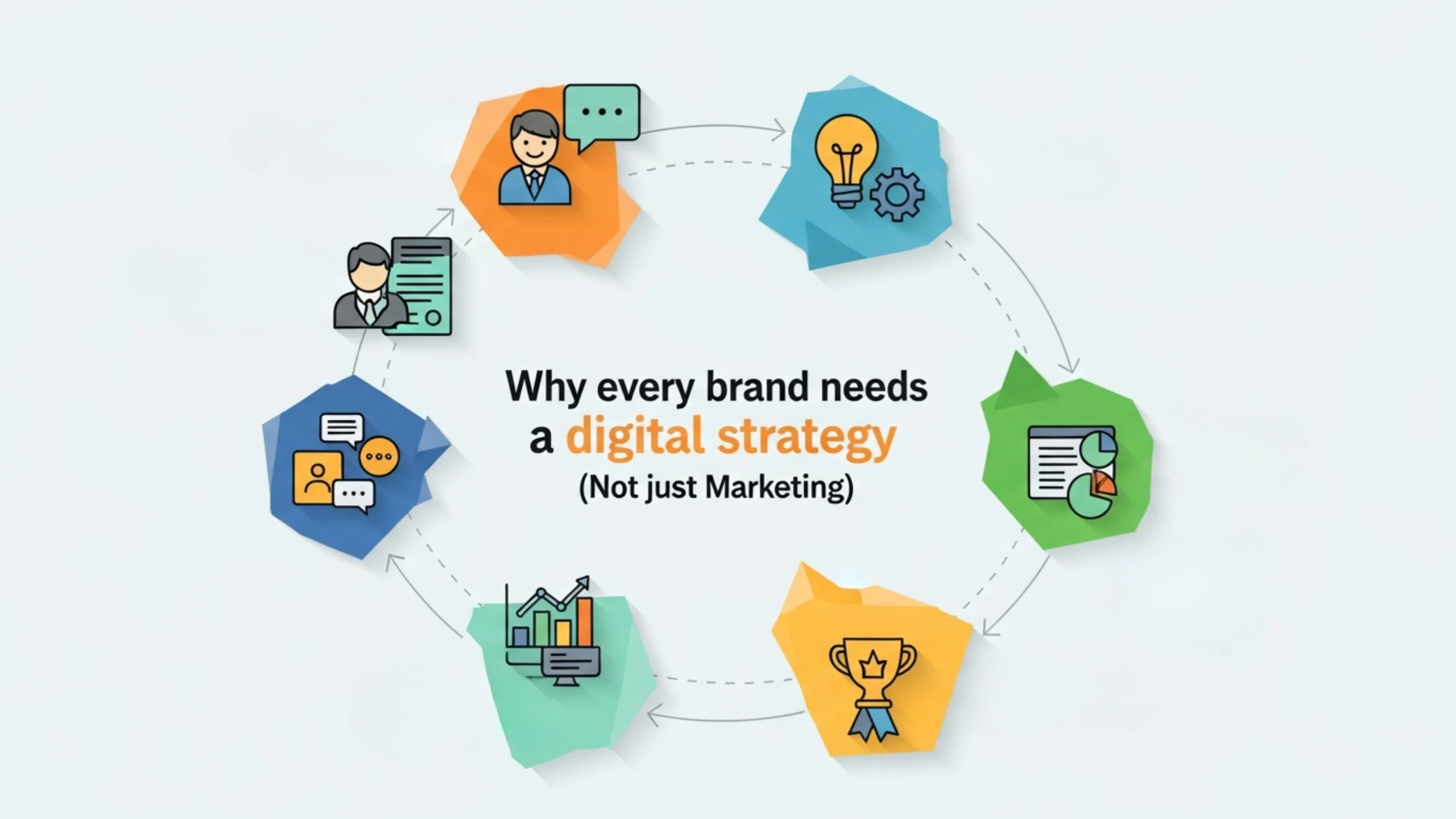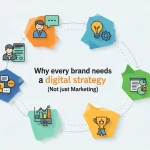
In today’s fast-moving business environment, most brands have already embraced some form of digital marketing — social media campaigns, paid ads, influencer collaborations, or content marketing. Yet very few have a true digital strategy.
The difference is subtle but powerful. Marketing gets you visibility; strategy gets you growth. Marketing is what you do; strategy is why you do it, how you do it, and what connects it all together.
Without strategy, even the best campaigns lose momentum once budgets stop. With strategy, every activity compounds — building authority, data, and customer relationships that last beyond any single campaign.
At SourceCatch Konnect, we’ve seen this pattern repeat across industries. Brands that grow sustainably don’t rely on trends or virality — they operate with systems. And those systems start with a solid digital strategy.
Why a Digital Strategy Matters
Many companies mistake marketing execution for marketing direction. They run ads because competitors do, post because they need activity, and test trends hoping something will work. But growth built on guesswork is never consistent.
A digital strategy brings clarity, consistency, and control. It aligns every digital activity — from content creation to advertising to analytics — around one common goal: business growth.
Here’s why it matters:
- Consistency Across Channels
A strong digital strategy ensures your message, tone, and visual identity stay aligned across every platform. Customers shouldn’t feel like they’re interacting with five different brands depending on where they see you. - Smarter Resource Allocation
Instead of scattering budgets across disconnected campaigns, strategy allows you to focus on what actually drives measurable results. - Data-Driven Decisions
With a defined strategy, every activity has a key metric tied to it — whether it’s reach, engagement, or conversion. This creates accountability and removes guesswork. - Long-Term Customer Relationships
Marketing may win attention; strategy builds loyalty. It designs an intentional journey that keeps customers engaged beyond the first click.
Simply put, a digital strategy is your compass. Without it, marketing is just movement — not direction.
What a Digital Strategy Really Means
A digital strategy is not a 20-page document or an annual report. It’s a living system that connects your brand goals to your digital actions.
It defines:
- Who your audience truly is (Ideal Customer Profile)
- What value you deliver to them
- Where they engage online
- When they’re most receptive
- How you convert interest into trust and purchase
At its core, it answers one simple question:
“How does every digital touchpoint move a prospect closer to becoming a loyal customer?”
Unlike short-term campaigns, strategy doesn’t end when results start showing. It evolves with the business. Every campaign, every piece of content, and every ad feeds data back into it — making it smarter over time.
Key Elements Every Digital Strategy Should Include
To make your strategy actionable, ensure it covers these five pillars:
- Brand Positioning: A clear value proposition that differentiates you.
- Audience Segmentation: Defined personas with pain points and goals.
- Channel Integration: A unified plan linking paid, owned, and earned media.
- Measurement Framework: Metrics that track awareness, engagement, and conversions.
- Optimization Plan: A roadmap for continuous improvement.
A digital strategy is no longer optional; it’s essential. It gives your brand direction when algorithms change, confidence when competitors copy, and stability when markets shift.
Marketing may get you attention today, but strategy ensures you’re still relevant tomorrow.
At SourceCatch Konnect, that’s our mission — to help brands stop chasing clicks and start building digital ecosystems that last.








